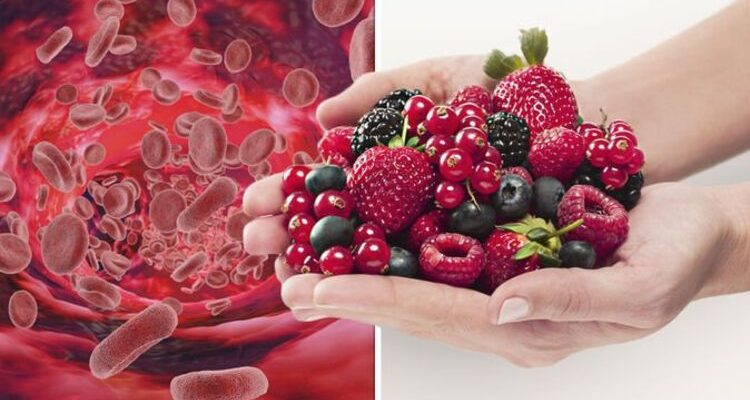Type 2 diabetes can be a 'devastating diagnosis' says expert
We use your sign-up to provide content in ways you’ve consented to and to improve our understanding of you. This may include adverts from us and 3rd parties based on our understanding. You can unsubscribe at any time. More info
Diabetes typically occurs when the body develops an inability to produce enough insulin, or respond to the hormone. Because insulin’s role is to take up blood glucose and convert it to energy, without it blood sugar levels rise. This can cause irreversible damage to the nerves and organs if left untreated. Fortunately, however, the addition of two fruits to your diet could bring blood glucose levels under control.
According to recent data, the burden of diabetes is growing year on year, with caseloads doubling in the past 15 years alone.
A host of factors can predispose individuals to the condition, but where lifestyle is the cause, dietary adjustment can significantly lower one’s risk of developing symptoms.
Certain fruits, for example, help by improving insulin sensitivity and promoting the uptake of blood glucose, due to their antioxidant activity.
A 2017 study published in the British Journal of Nutritional, determined that the polyphenols derived from cranberries and strawberries could boost sensitivity to insulin and reduce blood sugar.
READ MORE: Diabetes symptoms: Experiencing polydipsia ‘all the time’ is an ‘initial’ warning sign

Data collated during the study indicated that six-week consumption of 333 mg polyphenols from strawberries and cranberries significantly improved insulin sensitivity.
The authors, however, stressed that further research was needed to elucidate the activity of these polyphenols, as well as larger and longer-term studies.
But the findings were later echoed in a 2020 study, published in the journal of Current Developments in Nutrition.
The randomised trial, which took place over a 14-week period, studied adults with metabolic syndrome who were assigned to one of three treatments.
These included a control powder, a serving of strawberries (powder) or 2.5 servings of strawberries (powder).
“The freeze-dried powders were blended in water, and participants consumed half the daily dose in the morning and a half in the evening,” explained the authors.
Participants were asked to follow their habitual diet and lifestyle while refraining from eating other berries.
The authors of the study noted: “These data suggest that consuming strawberries at 2.5 servings daily for four weeks significantly improved insulin resistance and LDL particle profile in adults with metabolic syndrome.”

An earlier 2008 study, carried out on type 2 diabetes, yielded similar results, confirming cranberry juice could help control blood sugar among diabetics.
Previous research has concluded that the benefits of polyphenols for diabetics occur through different mechanisms.
By promoting the uptake of glucose in tissues, it’s been suggested polyphenols can therefore improve insulin sensitivity.
By improving insulin signal, the fruits allow blood sugar to move out of the bloodstream and more quickly into cells.

This could help reduce inflammation levels throughout the body, especially when the fruit is consumed within two hours of a meal, according to some studies.
What are polyphenols?
Polyphenols are a large group of phytochemicals that can be broken down into different types.
Among other fruits, apples, grapes, berries and pears contain some of the highest amounts of polyphenols.
But other known dietary sources include vegetables, chocolate, tea, whole grains, dry legumes, nuts and olive oil.
Source: Read Full Article
